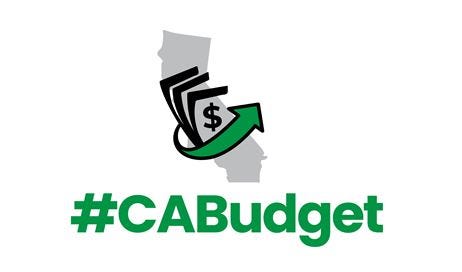Prolonged tax payment delay will affect California's budget process in 2023 and 2024
Californians affected by recent storms can benefit from IRS and state relief
Relief for Storm-Affected Taxpayers. Californians and California businesses affected by recent storms can benefit from an additional, perhaps unprecedented, extension of various income tax deadlines to October 16—confirmed this morning in an announcement by the Governor’s Office. The deadline extension applies to counties that include almost all of the state’s population, including residents and businesses in Los Angeles, San Diego, Orange, Riverside, San Bernardino, Santa Clara, Alameda, San Francisco, and Sacramento Counties.
State Typically Must Align With Federal Income Tax Deadlines. Following January’s announcement of a more than four-month deadline extension by IRS and last week’s surprise announcement by IRS of an additional five-month extension to October, state officials understandably aligned California’s deadlines with those set by the federal tax agency, as noted in the Governor’s announcement. Filling out federal income tax returns typically is a prerequisite for filling out state income tax returns.
Payments by High-Income Taxpayers Interrupted, Likely Until October. Tax collections by FTB—primarily attributable to high-income Californians and big businesses—slowed dramatically immediately following IRS’s initial January 10 announcement. For example, FTB’s personal income tax collections slowed considerably, down nearly 70% from prior-year levels during the rest of January. Corporate tax collections—performing well for most of this fiscal year—were down about 40% during the rest of January. Accordingly, it is expected that many high-income taxpayers and large corporations will continue not paying income taxes to FTB until the end of the tax deadline extension in October. Tens of billions of dollars of tax payments are likely to be delayed. (Personal income tax withholding payments to EDD, as noted by the LAO in a San Francisco Chronicle article today, make up most of that tax’s cash flow and continue uninterrupted.)
California Well Positioned for Cash Flow Interruptions in 2023. Hypothetically, in 2009, a nine-month income tax deadline extension by IRS—if one had been ordered then —could have resulted in a state bond and payroll default with catastrophic program impacts that could have harmed millions of Californians. (And, that’s not hyperbole!) Thankfully, in 2023, California is much better positioned to withstand a significant cash flow interruption. At the end of January, state cash balances exceeded $125 billion: $33 billion in the General Fund and $94 billion of unused borrowable resources in reserves, special funds, and other state accounts. Under the Governor’s January revenue estimates and budget proposals, those cash balances were projected to remain at or above $100 billion through October 2023.
Now, as a result of the expected delay by high-income and corporate taxpayers, those balances will be reduced during the spring, summer, and fall. In my opinion, state balances should remain sufficient to allow smooth state operations without the need for external borrowing. State executive branch officials will analyze cash flows in the coming months and can revisit the need for external borrowing if required.
Significant Effects on the Budget Process. The effects of this unprecedented income tax deadline extension will only be fully understood with time. The likelihood is high that this will affect the budget process substantially in both 2023 and 2024 in the following ways:
Incomplete 2023 Revenue Data. May Revision 2023 will be completed without aggregate income tax payment data for the 2022 tax year. Typically, personal income tax payers—even those filing extension returns in October—would make estimated final payments for 2022 in April 2023. High-income filers now can be expected to wait until October. This will result in significant degradation of the revenue data typically included in the May Revision. The likelihood of revenue projection errors for both 2022-23 and 2023-24—either positive or negative—therefore will be much, much greater than usual, which is a lot. (Note: under the previously announced tax extension to May, aggregate 2022 tax payment data would have been delayed, but still would have been available for the final June 2023 negotiations on the state budget. Now that data will not be available until October 2023: more than three months after budget passage.)
Large Corrections More Likely for 2024. Given these data issues, the likelihood is much greater that large corrections—positive or negative—will be required during the 2024 state budget process.
Reduced State Investment Earnings. The IRS’ payment extension will deplete cash holdings of the state in spring, summer, and fall. “Pooled money” investment earnings are a General Fund revenue source—projected to be $1.8 billion in 2022-23 and $1.7 billion in 2023-24 under the Governor’s January budget estimates. All other things being equal (including interest rate assumptions for the state’s treasury holdings), those revenue estimates probably will need to be reduced in the May Revision.



